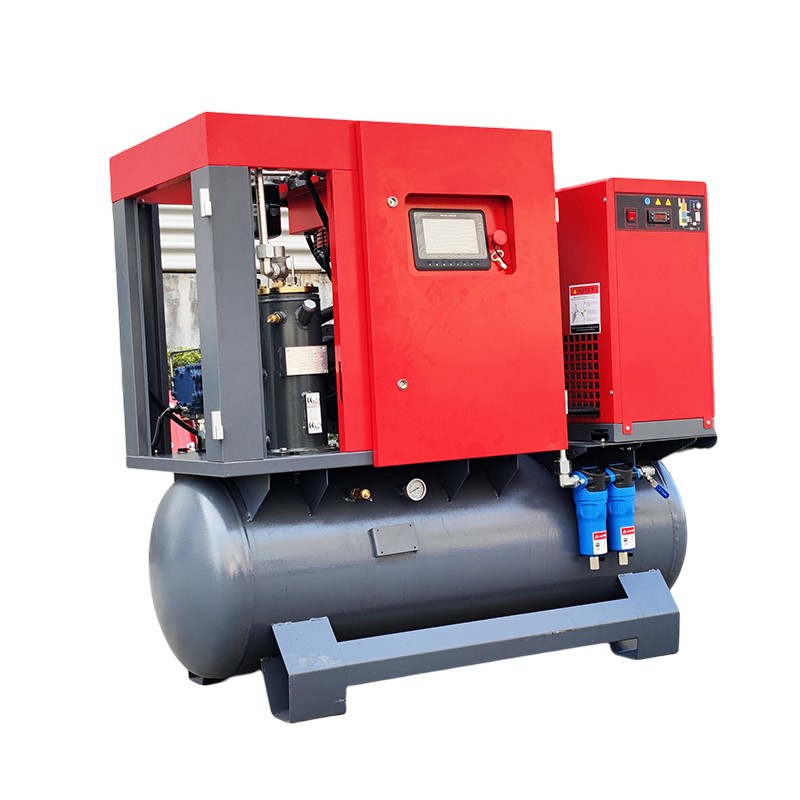Reciprocating Piston Air Compressors: A Breath of Fresh Air

Hey there, fellow compressor enthusiasts! If you’re diving into the world of air compressors or looking to expand your knowledge, you’re in for a treat. In this comprehensive guide, we’re going to explore reciprocating piston air compressors—a versatile and essential tool that can be found in countless applications. I’ll break down what they are, how they work, and why they matter. So, let’s roll up our sleeves and dive into the world of reciprocating piston air compressors!
What Is a Reciprocating Piston Air Compressor?
Let’s start with the basics:
Definition
A reciprocating piston air compressor, often simply called a piston compressor, is a type of air compressor that uses one or more pistons to compress air. These compressors are known for their reliability and versatility, making them a popular choice across various industries.
How Does a Reciprocating Piston Air Compressor Work?
Now that we know what it is, let’s dive into the inner workings:
1. The Piston and Cylinder
- At the heart of a reciprocating piston air compressor is a piston that moves back and forth within a cylinder. Think of it like a syringe but on a larger scale.
2. The Compression Process
- As the piston moves away from the cylinder head, it creates a vacuum in the cylinder, drawing in air through an intake valve. When the piston reverses direction and moves towards the cylinder head, it compresses the air, increasing its pressure.
3. Discharge
- Once the air is compressed to the desired pressure, it’s discharged into a storage tank or directly into the pneumatic system through a discharge valve.
4. Reciprocating Motion
- The piston’s back-and-forth motion is what gives these compressors their name—reciprocating. This motion continues cyclically, maintaining a steady supply of compressed air.
Applications of Reciprocating Piston Air Compressors
Now that we know how they work, let’s explore where they shine:
1. Industrial Use
- Reciprocating piston air compressors are a staple in industrial settings. They power pneumatic tools, such as nail guns, impact wrenches, and sandblasters.
2. Manufacturing
- These compressors are essential in manufacturing processes that require compressed air for various tasks, including assembly, painting, and packaging.
3. Automotive Repair
- Auto mechanics rely on piston compressors for tasks like inflating tires, running pneumatic tools, and even powering vehicle lifts.
4. Construction
- In the construction industry, piston compressors are used for tasks like operating jackhammers, powering air tools, and providing compressed air for sandblasting.
Advantages of Reciprocating Piston Air Compressors
So, why choose a reciprocating piston air compressor? Here are some advantages:
1. Reliability
- These compressors are known for their durability and longevity. With proper maintenance, they can last for years.
2. Versatility
- They can handle a wide range of applications, making them versatile tools in various industries.
3. Cost-Effective
- Piston compressors are often more budget-friendly than some other types of compressors, making them accessible for small businesses and workshops.
Maintenance Tips for Reciprocating Piston Air Compressors
To keep your compressor running smoothly, follow these maintenance tips:
1. Regular Oil Changes
- If your compressor is oil-lubricated, change the oil as recommended by the manufacturer. Clean oil ensures proper lubrication.
2. Air Filter Maintenance
- Clean or replace air filters regularly to prevent dust and debris from entering the compressor and affecting performance.
3. Tighten Bolts and Connections
- Check and tighten any loose bolts or connections to prevent air leaks and vibrations.
4. Drain the Tank
- Regularly drain the tank to remove moisture and prevent corrosion. It’s a simple but essential step.
FAQs About Reciprocating Piston Air Compressors
Let’s address some common questions about these compressors:
Q1: What’s the difference between single-stage and two-stage piston compressors?
- Single-stage compressors have one piston that compresses air in a single step. Two-stage compressors have two pistons, with the second piston compressing the air further for higher pressures.
Q2: Can I use my piston compressor in a home garage?
- Yes, many piston compressors are suitable for home garage use, such as inflating tires and running pneumatic tools.
Q3: What maintenance should I perform on my compressor?
- Regular maintenance includes changing the oil (if oil-lubricated), cleaning or replacing air filters, checking for air leaks, and draining the tank.
Q4: Are there portable piston compressors available?
- Yes, there are portable piston compressors designed for easy transport and use on job sites or in smaller spaces.
Conclusion
Reciprocating piston air compressors are workhorses in various industries, providing reliable and versatile compressed air solutions. Whether you’re using one for DIY projects in your garage or powering industrial machinery in a factory, understanding how they work and how to maintain them is essential.
By following maintenance tips and safety precautions, you can ensure your reciprocating piston air compressor continues to provide a breath of fresh air for your applications. So, keep those pistons moving and enjoy the power of compressed air for years to come!
